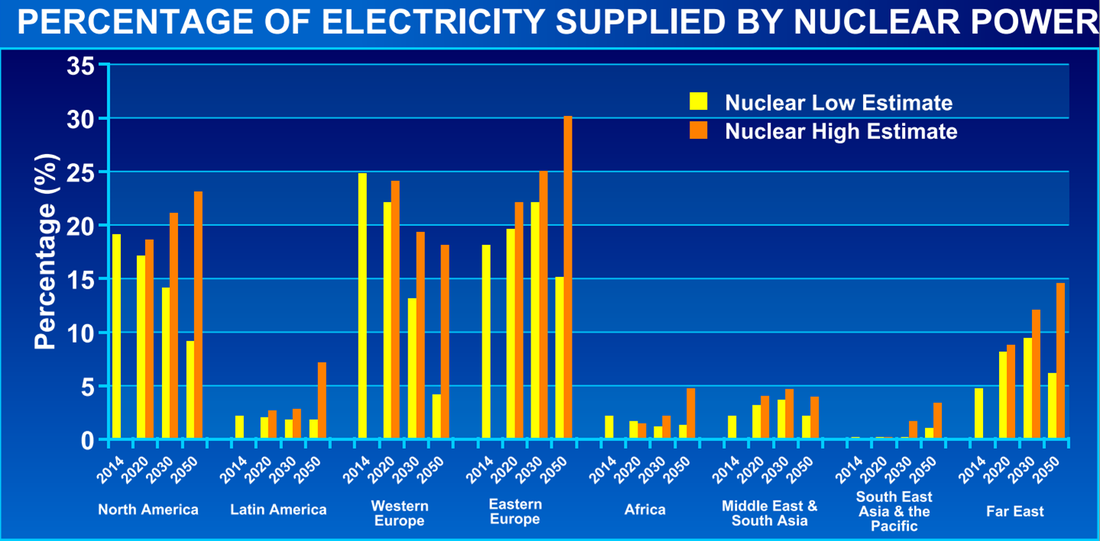Could 2016 be the Year for Nuclear Energy?
January 4, 2016, 4:03PMANS Nuclear Cafe
by Lenka Kollar
When I was graduating from the Nuclear Engineering department at Purdue in 2008-2009, the outlook for nuclear energy was great, so great that we called it the "Nuclear Renaissance." My classmates and I were getting job offers left and right from the nuclear industry, despite the financial crisis. Nuclear energy was predicted to rise 50 percent in the US and countless countries around the world were considering introducing nuclear to the energy mix.
Then, Fukushima happened and all plans were put on hold while the ramifications of the accident were analyzed. While the social impact on the local community is irreversible and the clean up will be difficult, many countries have since realized that nuclear energy is necessary for producing clean and reliable electricity and that the risks for be mitigated with lessons learned and investing in new technology.
The International Atomic Energy Agency (IAEA) predicts that the percentage of electricity supplied by nuclear energy will grow in total worldwide, both in the low and high estimate. However, growth (or decline) does vary by region (see graph below). The largest growth is in Asia, countries like China, India, and South Korea are investing heavily in nuclear energy and several other Asian and Pacific countries are currently building the infrastructure to introduce nuclear energy.
At the big Climate Change conference in Paris this year (COP21), nuclear energy had a presence. IAEA officials said to consider nuclear as sustainable energy and the OECD Nuclear Energy Agency promoted nuclear energy for its ability to provide baseload electricity with low life cycle greenhouse gas emissions, on par with renewables. Nonprofits and nuclear industry associations campaigned for #Nuclear4Climate and prominent environmental scientists claimed that we can't mitigate climate change without nuclear energy. The US Secretary of Energy announced big investments for nuclear innovation and some countries even included nuclear energy specifically in their national contributions.
The final agreement from COP21 was not technology-specific, which means that all low-carbon technologies, including nuclear, can be used to mitigate climate change. This is a big signal to the world, because it means that we should stop favoring one technology over another and start using all available solutions where they are appropriate. Jeremy Gordon of the World Nuclear Association said it perfectly:
"The world needs more positive solutions, more fixing of problems where they exist. It needs less arguing, less favoritism, less blocking."
With 2015 ending on a high note for nuclear energy, will 2016 and beyond be the years we see the resurgence of the nuclear renaissance? If the construction of the Barakah Nuclear Power Plant in the UAE goes according to schedule, in it will be the first plant to come online in a newcomer nuclear country in over 30 years. Four more new reactors will come online in the US. China is continuing aggressive investment in nuclear energy and Japan is restarting its nuclear power plants. If all goes to plan, by 2020 we'll see actual growth in nuclear energy and hopefully a transition to a clean energy economy.
This post was originally posted on nuclearundone.com, and is reprinted with full permission.


